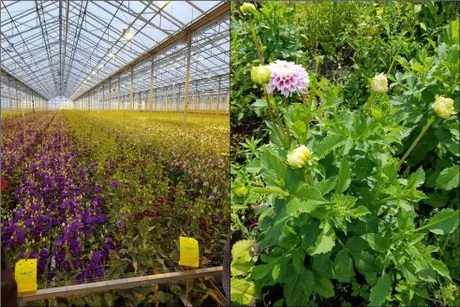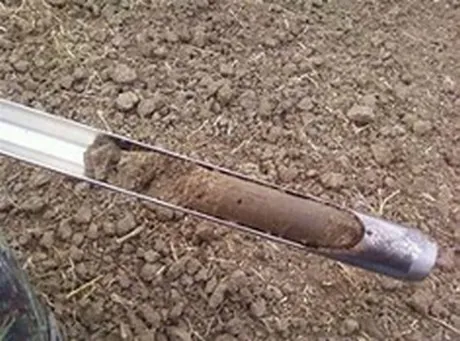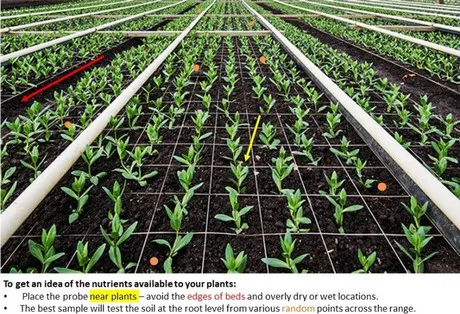If you are using Saturated Paste Extract (SPE) to assess soil nutrients for in-ground grown cut flowers, you may be underestimating plant-available nutrients and applying fertilizers that aren’t needed.
by Chevonne Dayboll, Greenhouse Floriculture Specialist, OMAFRA, Lauren Vanderlingen, OMAFRA Summer Student and Christoph Kessel, OMAFRA Soil Fertility Specialist – Horticulture
Many greenhouse growers use SPE analysis when testing growing media in the greenhouse for nutrient levels. Typically, SPE tests are used in soilless or peat-based growing substrates, the kind we usually see used in potted plant production. However, if you are growing cut flowers in a mineral soil, either in the greenhouse or outdoors, SPE is not giving you a complete report on nutrients available to your crop.

Both greenhouse and outdoor soils that produce cut flowers should be tested on a regular basis.
The reason is that SPE method uses water to extract nutrients and only tells us about nutrients that are water-soluble. It does not report on plant-available nutrients that are held on organic and inorganic exchange sites. Because SPE uses only water as the extractant, it can underestimate plant-available nutrients. This in turn increases the potential for growers to apply fertilizers that aren’t necessarily needed.
A better choice for in-ground systems is a mineral soil analysis. This test uses a chemical extractant to assess plant-available nutrients. Unlike SPE, it extracts both water-soluble nutrients and those that are held on organic and inorganic exchange sites.
In short:
- SPE extracts the water-soluble nutrients and can underestimate of plant-available nutrients. This can lead to application of fertilizers that are not needed.
- Mineral soil analysis uses chemical extractants to give a better estimation of plant-available nutrients. It includes both the water-soluble nutrients and those held on organic and inorganic exchange sites.
If you are producing in-ground greenhouse cut flowers and are using SPE to analyze your soil, compare the results for the two different methods yourself.

Take a minimum of 20 soil cores from across a house or range of plants from the same stage.
The next time you take a soil sample, collect enough soil to submit a second sample as well. Submit one for SPE analysis and submit another for a mineral soil analysis.
If the reported mineral soil analysis values are greater than 30 ppm nitrate-nitrogen (N), 60 ppm phosphorus (P), 120 ppm potassium (K) or 100 ppm magnesium (Mg) consider a trial on a small scale where you reduce fertilizer applications and compare it to your current practice.
Soil sampling tips
Taking soil samples after every crop cycle or on a regular schedule can provide useful information about the composition of your soil and the nutrients it contains.
To get an idea of the nutrients available to your plants, follow these tips for getting the best soil sample:
- Place the probe near plants – avoid the edges of beds and overly dry or wet locations.
- The best sample will test the soil at the root level. Ensure that you collect the soil near the plant’s rooting zone (typically up to 15 cm below ground, although some species may have deeper/shallower root systems)
- It’s good practice to remove the top 1-2 cm of soil from your sample to remove any mulch or organic debris.
- Take a minimum of 20 cores/samples from 0-15 cm deep from across a house or range of plants from the same stage. Collect soil in a clean plastic pail. Mix thoroughly, and take a subsample (approximately 500g) for analysis.
- Make sure that your sample in different crop stages – newly planted plugs have different needs than blooms ready for harvest.
- Take regular soil samples and keep a record of trends over time.

A list of OMAFRA accredited soil testing laboratories can be found at: http://www.omafra.gov.on.ca/english/crops/resource/soillabs.htm
Source: onfloriculture
